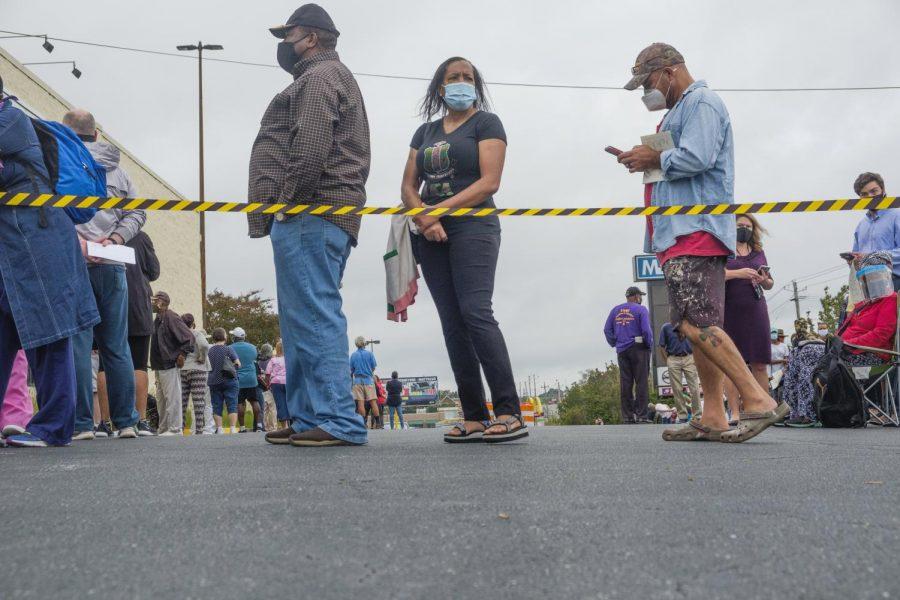
Section Branding
Header Content
How Georgia's redistricting process sets the playing field for 2022 and beyond
Primary Content

The political and demographic tides of Georgia may have turned in Democrats’ favor over the past decade, but the Republican-led redistricting process has allowed the GOP to ride the waves of power a bit longer.
Georgia voters elected two Democratic U.S. senators in January 2021 runoffs, narrowly picked President Joe Biden in November 2020 and flipped two suburban U.S. House seats to Democratic lawmakers in the past four years, but state government is still dominated by Republicans.
This month, the GOP-led Georgia General Assembly approved redistricting maps that overhaul a suburban congressional seat held by a Democrat to favor conservative voters in Atlanta's northern exurbs, even as the maps shifted more districts to metro Atlanta Democrats in the state legislature.
Barring successful legal challenges or any mid-cycle realignments, these maps will control Georgia's politics for the next 10 years, and have a profound impact on how the swing state will be governed and what types of candidates will run.
While statewide elections have essentially been a competitive 50-50 split recently, the new boundaries approved for state and federal lawmakers are not as competitive, possibly leading to more races being decided in lower-turnout primaries and the potential for more extreme candidates to take office.
Every state and federal lawmaker will be on the ballot except Sen. Jon Ossoff. Georgia has played a pivotal role in national politics, and with control of the U.S. House and Senate on the line, the 2022 midterms will be no exception.
Here are some of the most notable changes to district lines, candidate decisions and other factors now that the redistricting special session is complete.
U.S. House
Currently, Georgia has eight Republican and six Democratic representatives in the U.S. House, but that number is destined to change. The new congressional map takes the 6th District, represented by Democrat Lucy McBath, and turns it into a conservative stronghold by moving the seat northward to include Cherokee, Forsyth and Dawson County voters. In turn, the 7th District represented by Democrat Carolyn Bourdeaux shrunk its footprint to just part of Gwinnett County and Johns Creek, creating a safely Democratic district.
McBath quickly announced she would be running in the new 7th District, noting that, technically, there is no incumbent since Republicans did not include Bourdeaux's home in the new boundaries. But the law does not require members of Congress to live where they run or represent, so Bourdeaux has also said she will run for reelection in that district.
This sets up a potentially messy primary between two sitting Democratic lawmakers, unless one ultimately decides to switch to a different office or not run.
In the 6th District, several existing Republican candidates live in the Cobb and Fulton portions, leaving open a possibility for a candidate more familiar to Forsyth County voters to have a strong showing in a primary.
Rich McCormick, the 2020 GOP nominee for the 7th Congressional District, has indicated he will run again, but will announce which seat he will vie for soon. He currently lives in the new 9th Congressional District but is close to the border of the 6th District, which includes parts of the old district he ran for last year.
Rep. Andrew Clyde of the 9th District said Tuesday morning on Voice of Rural America that he would run for reelection in the 9th, after fellow Republicans drew his home into the new 10th District, which is open because of Jody Hice's run for secretary of state.
While the contours of other U.S. House districts will change, the competitiveness of the races will not by very much. In the new congressional map, the closest district would be Southwest Georgia's 2nd District, represented by Sanford Bishop, which would favor Democrats by about 10 points.
On average, a Republican congressman from Georgia would win with 61% of the vote in their district while a Democratic representative would capture 72% of the vote, meaning districts with Democratic U.S. House members have Democrats more heavily packed into them than Republicans are in Republican districts.
State Senate
The Georgia state Senate map takes two more rural Republican districts that will be vacated by lawmakers running for higher office and moves them into Democrat-heavy areas in metro Atlanta, while shifting the boundaries of Sen. Michelle Au's Johns Creek-based district to become conservative-leaning and majority white.
Sen. Bruce Thompson (R-White) is running for labor commissioner, so Republicans moved his Bartow and Cherokee-based seat to north Fulton County. State Rep. Josh McLaurin (D-Sandy Springs) quickly announced he would run for the new seat.
Sen. Tyler Harper (R-Ocilla) is running for agriculture commissioner, and so, due to population loss in South Georgia, his district is moved to Gwinnett County. State Rep. Beth Moore (D-Peachtree Corners) announced she would run for the new seat as well.
Democrats objected during the special session to the new boundaries for Au's district, which shifts from majority-nonwhite to majority-white but keeps its percentage of Asian voters.
An analysis from the Princeton Gerrymandering Project finds only one of the 56 new districts is competitive.
State House
Republicans in the state House created a map that primarily takes advantage of retirements to shed a few seats of their majority and shift more districts into metro Atlanta. New vacant House seats would be created in conservative-leaning Forsyth County and Democratic parts of Cobb, Fulton, Gwinnett and Rockdale counties.
One set of incumbent Democrats in Gwinnett County are paired against each other: Rebecca Mitchell and Shelly Hutchinson in Snellville. Republican Rep. Gerald Greene (R-Cuthbert) now sits in Rep. Winfred Dukes' (D-Albany) district and Rep. Philip Singleton (R-Sharpsburg) is now in a South Fulton-based, Democrat-heavy district under this new map.
Democrats could gain as many as six seats on paper, but a difficult national environment for the party could translate into down-ballot troubles.
Statewide
The political maps for state and federal lawmakers don't affect statewide races like governor or secretary of state, but there are still implications. Democrats are hoping to build on the 2018 election cycle that saw Stacey Abrams come within 55,000 votes of becoming governor, and are preparing for her likely rematch against Gov. Brian Kemp.
Some Republican lawmakers and candidates continue to question the 2020 election outcome and demand a so-called "forensic audit" of the results that were counted three separate times. In the January 2021 U.S. Senate runoffs, this in part led to a noticeable drop off in votes across Georgia in conservative strongholds.
Some are worried a repeat could happen in 2022, especially in places that do not have competitive local races to energize voters to the polls.
With fewer competitive races and seats available to them, Democrats must make choices about which candidates to support in primaries and what resources to put behind candidates and districts that seem impossible to win.

